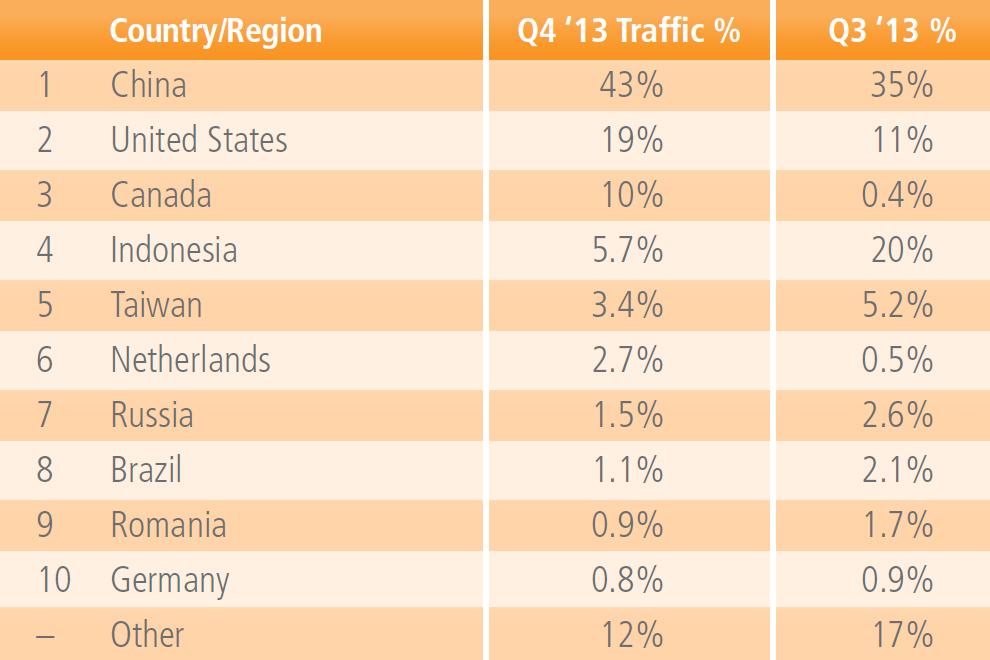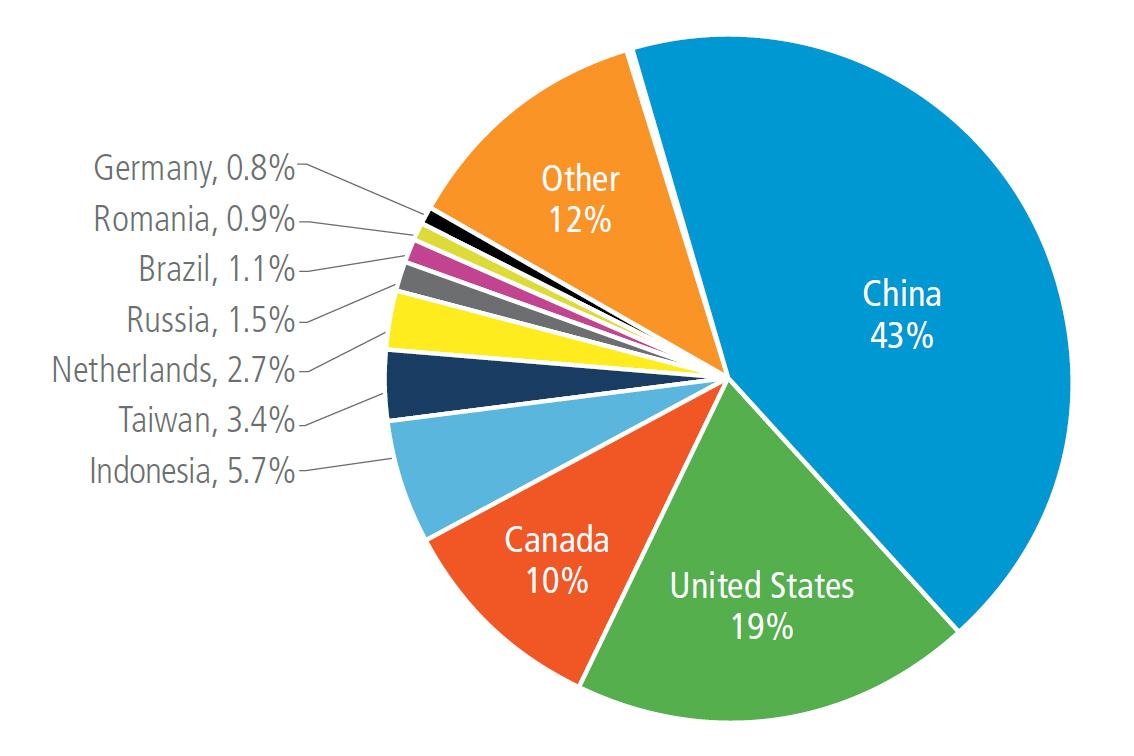
According to a report from Akamai, a firm that specializes in cloud and security services, a massive chunk of Distributed Denial of Service (DDoS) attacks originated from China: 43 percent to be exact. That was up by 8 percent when compared with the third quarter of the same year, when only 35 percent of such attacks came from China.
Not only was China the most active nation of origin when it came to orchestrating and executing DDoS attacks during Q4 of 2013, it was more active than the next three nations combined. For instance, the percentage of DDoS attacks that came from the United States is pegged at 19 percent, a spike of 8 percent compared to Q3. Next up on the list is Canada, which was home to 10 percent of DDoS attacks during the fourth quarter of last year. The instances of DDoS attacks coming from our northern neighbor rose extremely sharply, from 0.4 percent in the previous quarter; an upshot of almost 9.5 percent. Finally, there’s Indonesia. 5.7 percent of all DDoS attacks came from Indonesia in Q4, but that was a sharp drop compared to Q3, when it accounted for 20 percent of them.
However, the report contains some positive developments as well. For instance, connection speeds spiked to 3.8 MBps during Q4 of 2013, a quarterly increase of 5.5 percent and a year over year bump of 27 percent. The biggest gains were enjoyed by Ireland (59 percent increase year over year) and Sweden (30 percent bump year over year).
Considering that in the past year, the Internet has been bombarded with massive hacks against retail chains like Target, attacks on numerous prominent websites, and the recent revelation of the Heartbleed bug, the dangers of hacking are becoming a more ever-present part of daily life.
Editors' Recommendations
- Microsoft confirms recent service outages were DDoS attacks
- Hackers used 30,000 computers for record-breaking DDoS attack
- Google just thwarted the largest HTTPS DDoS attack in history
- Hackers just launched the largest HTTPS DDoS attack in history
- Cloudflare just stopped one of the largest DDoS attacks ever




